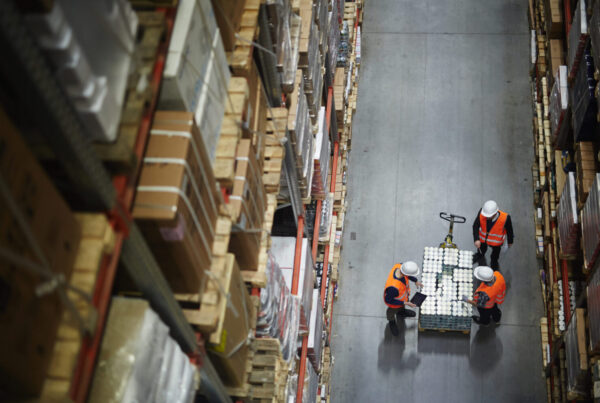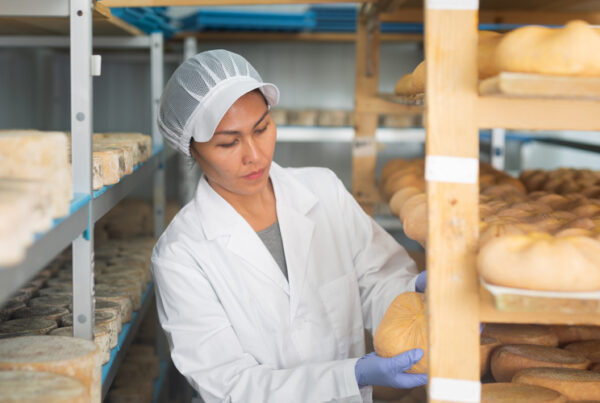In the realm of manufacturing and quality assurance, a Certificate of Analysis (COA) stands as a testament to a product’s integrity. This document provides evidence that a product meets specific criteria, ensuring its quality, safety, and compliance with established standards. It’s an essential tool for industries ranging from pharmaceuticals to cosmetics, and from food production to chemical manufacturing.
COAs: The Essence and Execution
At its core, a COA offers detailed information about a product’s specifications and the results of its testing. It typically lists the product’s components, verifies its potency or concentration, and confirms the absence of harmful contaminants. The process of generating a COA usually involves thorough testing of product samples in certified labs, ensuring that they adhere to both industry standards and regulatory guidelines.
COAs Best Practices and Challenges:
While the benefits of COAs are evident, ensuring their accuracy and consistency poses challenges. Some best practices in the realm of COAs include:
- Standardized Testing Procedures: To ensure consistent results, it’s crucial to employ standardized testing methodologies across all batches.
- Transparent Documentation: Every step of the testing process should be documented to ensure traceability and credibility.
- Third-party Verification: Often, an independent, third-party lab’s validation provides additional confidence in the results.
- Continuous Updates: As regulations and standards evolve, it’s essential to update the COA processes accordingly.
Yet, challenges arise, especially with evolving global regulations, the potential for human error in testing, and ensuring that every product, regardless of its batch, aligns with the standards detailed in the COA.
COAs Importance to SQF and BRC audits:
SQF (Safe Quality Food) and BRC (British Retail Consortium) are among the leading food safety management certifications globally. A robust COA process is paramount for these audits.
- Evidence of Compliance: A well-documented COA serves as evidence that a product complies with food safety standards.
- Risk Mitigation: By confirming that products adhere to specified safety parameters, COAs minimize the risk of non-compliance during audits.
- Building Trust: When manufacturers can provide consistent COAs during SQF and BRC audits, it reinforces their commitment to quality and safety.
To sum up: a Certificate of Analysis is more than just a document. It’s a symbol of commitment to quality, safety, and transparency, ensuring that products across sectors meet the expectations set for them.
COAs in the Pharmaceutical Industry
The pharmaceutical sector is one of utmost importance, dealing directly with products that affect human health and wellness. With medications and vaccines playing pivotal roles in our lives, the assurance of their quality, efficacy, and safety is paramount. This is where Certificates of Analysis (COAs) come into play.
A COA in the pharmaceutical domain provides detailed information about the drug’s composition, purity, and other essential factors. Due to the critical nature of pharmaceuticals, there’s no margin for error. A slight deviation in the content or quality of a drug can have far-reaching consequences on its efficacy and safety profile.
Key Aspects of COAs in Pharmaceuticals:
- Composition Details: Every ingredient, active or inactive, must be listed with relevant concentrations.
- Testing Results: COAs should display results from rigorous testing phases, detailing the drug’s adherence to prescribed limits.
- Storage and Handling Instructions: How a drug should be stored and handled to maintain its efficacy is also a standard part of the certificate.
- Expiration Date: The shelf life of the drug, post which its efficacy might diminish, is a critical piece of information found in the COA.
Regular and stringent checks, coupled with robust electronic batch records, help in maintaining the gold standard of quality assurance in the pharmaceutical sector. Not only do these practices protect end-users, but they also safeguard the manufacturer against potential legal and compliance pitfalls.
COAs in the Food and Beverage Industry
Food safety is a concern shared by producers, retailers, and consumers alike. In the bustling world of food and beverages, a Certificate of Analysis acts as a beacon of trust and assurance. It tells a tale of quality control, product integrity, and the commitment of a manufacturer to consumer safety.
What’s Typically Included in a Food & Beverage COA?:
- Nutritional Information: Details about calories, fats, proteins, vitamins, minerals, and more are often a part of the COA.
- Allergen Information: Given the rising concerns about food allergies, this section highlights any potential allergens present.
- Microbial Analysis: Test results that confirm the absence (or presence within safe limits) of pathogenic bacteria or other microorganisms.
- Pesticides and Contaminants: In the modern era, ensuring that food products are free from harmful chemicals and toxins is paramount. COAs in this sector often include results from tests for pesticides, heavy metals, and other potential contaminants.
It’s also noteworthy to mention the importance of “how to pass SQF audit” within this industry. For manufacturers aiming for SQF certification, a robust COA process, in line with SQF standards, can be a significant advantage. By confirming the safety, quality, and regulatory compliance of every batch, food and beverage companies stand out in a competitive marketplace and build trust with their consumers.
COAs in the Chemical Industry
Venturing into the realm of chemicals, the importance of Certificates of Analysis (COAs) remains critical. Given the vast array of chemicals, each with its unique properties and potential hazards, it’s essential to have a thorough understanding of each product’s composition and characteristics.
Key Elements in Chemical COAs:
- Purity Level: One of the primary metrics in the chemical industry, this indicates the concentration of the main chemical component in the sample.
- Impurities: A comprehensive list of any impurities present, including their concentrations. This is vital because even trace amounts of certain chemicals can alter the properties and safety profile of a product.
- Physical Properties: Information such as melting point, boiling point, and density are often included in a COA for chemicals.
- Safety Information: Critical details about the handling, storage, and disposal of the chemical.
The chemical industry often deals with a certificate of analysis for export, given the global nature of the business. When exporting chemicals, this certificate is vital for ensuring that the product complies with both domestic and international regulations. Ensuring that the chemical is precisely what it’s claimed to be protects both the seller and buyer and end consumer from potential liabilities and hazards.
COAs in the Cannabis & Hemp Industry
With the growing acceptance and legalization of cannabis and hemp products across the globe, ensuring product quality and safety in this sector has become paramount. As with other industries, Certificates of Analysis serve as a guarantee of product integrity.
Cannabis & Hemp COA Components:
- Cannabinoid Profile: Details about the concentrations of various cannabinoids, such as THC, CBD, CBG, and others.
- Terpene Profile: Terpenes contribute to the aroma and potential therapeutic properties of cannabis. A detailed terpene profile is often included in COAs.
- Contaminants Screening: Given the plant-based nature of these products, it’s vital to test for pesticides, heavy metals, and microbial contaminants.
- Residual Solvents: For cannabis and hemp products that undergo extraction processes, the COA should confirm the absence or acceptable levels of residual solvents.
With the cannabis & hemp industry still in its relative infancy, transparency and trust are crucial for gaining consumer confidence. A robust COA, confirming the safety and potency of the product, is a significant step in that direction. Manufacturers adhering to best practices and providing transparent COAs pave the way for this industry’s bright future.
COAs in the Cosmetics and Personal Care Industry
Delving into the colorful world of cosmetics and personal care, it’s easy to get lost in the array of products promising beauty, rejuvenation, and well-being. Yet, beneath the alluring packaging and marketing, there lies a foundation of science, research, and quality assurance. Certificates of Analysis (COAs) act as the cornerstone of this foundation, ensuring that every shade of lipstick, every dollop of cream, and every spritz of perfume not only enhances beauty but does so safely.
Essential Elements of COAs in Cosmetics and Personal Care:
- Ingredient List: A comprehensive list of ingredients, ensuring that products are free from banned or harmful substances. This is particularly vital for products claiming to be organic or natural.
- Microbiological Testing: Since many personal care products have water as a primary ingredient, they can be susceptible to microbial contamination. A COA should provide details of microbial tests, ensuring products are free from harmful bacteria, molds, or yeasts.
- Allergens and Irritants: The skin’s sensitivity varies among individuals. A COA often includes tests that ensure products are hypoallergenic or free from common irritants.
- Physical and Chemical Properties: Information on pH levels, viscosity, and other properties can be crucial, especially for products that have specific applications, such as sunscreens or anti-aging creams.
The cosmetics and personal care industry is not just about external appearance; it’s deeply intertwined with health and self-confidence. As consumers become more discerning and aware, there’s a growing demand for transparency and assurance. A certificate of analysis for products in this industry not only guarantees quality and safety but also builds trust.
With global markets and diverse consumer bases, the personal care industry often sees products being exported to various regions. In such cases, a certificate of analysis for export becomes indispensable, ensuring products meet international standards and regulations.
In this industry, beauty is more than skin deep. It’s rooted in science, ethics, and a commitment to excellence. COAs play an indispensable role in upholding these values, giving consumers the confidence to look and feel their best.
How Mar-Kov Helps with CoAs
In the modern manufacturing landscape, the importance of reliable data tracking and management cannot be overstated. Especially when it comes to Certificates of Analysis (COAs) – documents that are central to product integrity, safety, and compliance – having a robust system in place is paramount. This is where Mar-Kov’s ERP (Enterprise Resource Planning) software steps in, acting as a game-changer for businesses looking to improve their manufacturing.
Efficient Tracking and Storage: One of MarKov’s standout features is its ability to meticulously track COAs. Every certificate, once generated or received, is logged and stored as an integral part of the lot record within the system. This centralized storage ensures that COAs are not just bits of paper lost in a sea of documents but are easily accessible pieces of vital information.
Instant Search Capabilities: Whether it’s a regular quality check, a mock recall exercise, or a sudden need for root cause analysis, time is of the essence. Mar-Kov software provides you with the ability to pull up any relevant COA in mere seconds. By inputting the finished good lot, MarKov’s software will not only display the COA for the finished product but also show all the raw ingredients that went into it and their COA’s. This holistic view provides an in-depth understanding of the product’s journey from raw materials to finished goods.
Integrated Testing Records: Beyond just storing COAs, Mar-Kov goes the extra mile by integrating any testing that businesses conduct. So, when you pull up a product’s lot record, you’re not just viewing its COA but also the results of any additional tests that were conducted. This comprehensive view ensures that businesses have a view of all tests internal and external to give you the information you need.
Enhanced Recall Preparedness: Recalls, while unfortunate, are a reality of the manufacturing world. In such times of crisis, MarKov’s software proves invaluable. By allowing businesses to simulate mock recalls, they can assess their preparedness, ensuring that if a real recall were to happen, they are not caught off guard. The software’s ability to trace back every component that went into a finished product, complete with COAs, ensures transparency and efficiency in such scenarios.
In essence, MarKov isn’t just an ERP software; it’s a partner in quality assurance. In a world where trust and reliability are paramount, Mar-Kov ensures that businesses always have their finger on the pulse, ready to provide evidence of their commitment to excellence at a moment’s notice.




